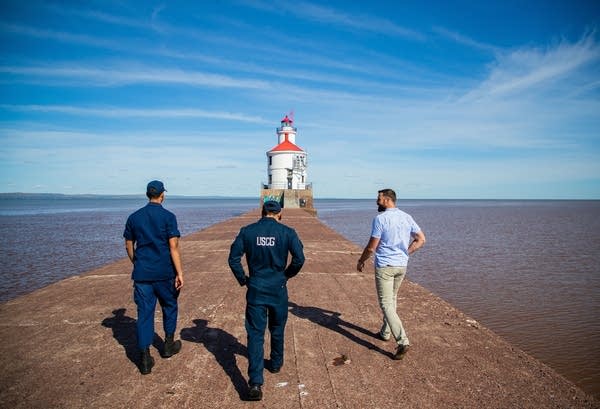56 feet above Lake Superior, lighthouse buyer finds the beauty of life on the edge

Coast Guard seaman Meyin Klin (left) and Petty Officer Eduardo Gutierrez (center) walk with Steven Broudy (right) to the Superior Entry Lighthouse on Oct. 7, 2019 in Superior, Wis.
Derek Montgomery for MPR News
Go Deeper.
Create an account or log in to save stories.
Like this?
Thanks for liking this story! We have added it to a list of your favorite stories.


